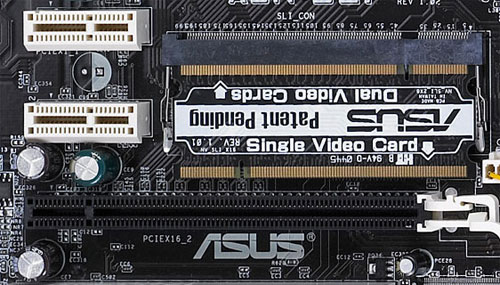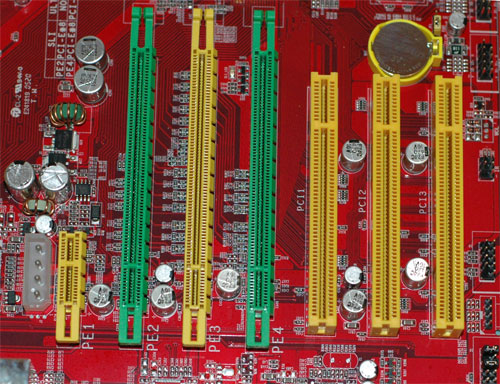Jetway 939GT4-SLI: Gem with a New SLI Twist
by Wesley Fink on August 24, 2005 8:30 AM EST- Posted in
- Motherboards
Jetway has had many interesting products in the last couple of years. Smaller players in the PC Market often have a hard time getting noticed, and we applaud Jetway for bringing some unique products to market as a means of shining the spotlight on the Jetway brand. When we first heard of the Jetway nForce4 SLI board with 3 x16 PCIe slots, we figured it was just another interesting twist from Jetway. However, the idea is such a good one that we really wanted to take a closer look.
The first SLI motherboards provided SLI capabilities with a Paddle card that was reversed to switch between single x16 video and dual x8 operation.
Jetway did a very clever and elegant rethinking of SLI in the design of the 939GT4-SLI-G, which is the subject of this review. All of the competing SLI boards use at least two-slot spacing between the two x16 slots to allow for double-width cards like the NVIDIA 6800 Ultra. Jetway used this fact to create a fresh new approach.
Jetway does not need a paddle card, or jumpers, or switches in this arrangement. The design is simplicity in itself. What's more, this board theoretically could be a better performer without the paddle, jumpers or switches that can limit overclocking performance.
The first SLI motherboards provided SLI capabilities with a Paddle card that was reversed to switch between single x16 video and dual x8 operation.


Jetway did a very clever and elegant rethinking of SLI in the design of the 939GT4-SLI-G, which is the subject of this review. All of the competing SLI boards use at least two-slot spacing between the two x16 slots to allow for double-width cards like the NVIDIA 6800 Ultra. Jetway used this fact to create a fresh new approach.

Jetway does not need a paddle card, or jumpers, or switches in this arrangement. The design is simplicity in itself. What's more, this board theoretically could be a better performer without the paddle, jumpers or switches that can limit overclocking performance.










46 Comments
View All Comments
John - Wednesday, August 24, 2005 - link
Yes.OvErHeAtInG - Wednesday, August 24, 2005 - link
In that case the evga deal is amazing.Cygni - Wednesday, August 24, 2005 - link
Page 1:" The outer slots, colored yellow, are configured as x8 slots and can be combined in SLI mode using the included SLI bridge. The middle x16 slot, colored red, is a single x16 PCIe slot."
Thats not what the picture shows! ;)
Furen - Wednesday, August 24, 2005 - link
I dont think "Overclocking: ULi M1695/M1567" applies to this board... shame on you for using an old review as a template, heh.formulav8 - Wednesday, August 24, 2005 - link
in the specs page under Bus Speeds: 200 to 40MHz. Hopefully it is 400mhz :)Jason
formulav8 - Wednesday, August 24, 2005 - link
Hmm, fairly interesting. Not something I needJason